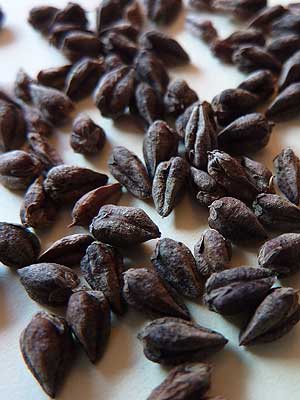Alternative Grains
AMARANTH - Amaranthus sp.

Beautiful burnt-orange seedheads on 6- to 8-foot tall plants with orange stalks. Primarily a grain amaranth (tasty and productive) but very ornamental as well. Each plant can produce up to 1 lb of light beige seeds that are easy to thresh. Most successful amaranth for us over the years. Certified Organic.
BUCKWHEAT

FLAX - Linum usitatissimum

The seeds of this variety are not as mucilaginous as other varieties and are scrumptious eaten out of hand or added directly to breads, muffins or cereals. The plants have very pretty blue flowers about knee high that appear daily only to disappear until the next day’s glorious display.
MILLET

Setaria italic. The second-most widely planted type of millet, primarily in Asia. This millet has the longest history, as it has been grown in China since the sixth millennium BC. Reaches about 4’ tall. The variety we offer is a cool-season, early maturing variety obtained from the USDA. Grown organically but not certified.

Setaria italica. Limelight millet is a hulled foxtail-type, later to mature than our other foxtail millet, but much larger and more productive. Uniform in height (3-5', depending on conditions) and bloom time, it is wonderfully ornamental but also nutritious as a grain for humans, chickens, or wild birds. Stalks emerge lime green and ripen to gold. Grind into a high-protein, gluten-free flour, feed the whole stalks to chickens, or harvest some for bouquets and leave some in the field for over-wintering wild birds. Direct sow in late spring in wide rows or blocks to hold the plants up.
QUINOA - Chenopodium quinoa

SESAME - Sesame indicum

